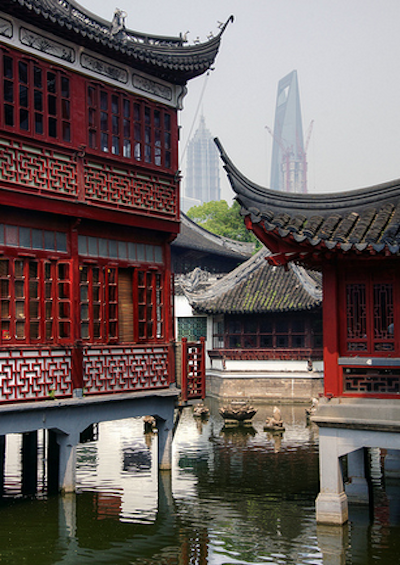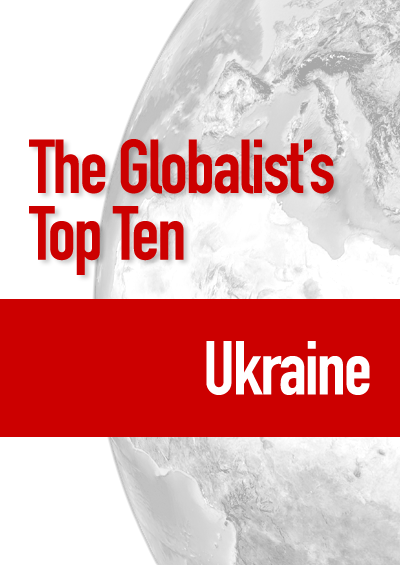Shanghai: The Underground Economy
Informal markets are telltale symbols of the modernity brewing in Shanghai.
December 28, 2014

Just across the ferry from Pudong, with its hypermodern spectacle of super tall skyscrapers, lies one of Shanghai’s oldest neighborhoods.
Situated to the southeast of Yuyuan, the touristy “Old City” spreads out towards the river’s edge. The entire area is slated for redevelopment. Much has already been destroyed.
Shanghai: In-Depth Look at a Global City
▪ Shanghai – A City Hungry for the Future
▪ Shanghai – Gazing At Its Own Image
▪ Shanghai and China’s Embrace Creativity
▪ Shanghai’s Thames Town
▪ Shanghai: The Underground Economy
▪ Shanghai and Its Environs
▪ Shanghai and Disruptive Innovation
Wandering through the neighborhood, the streets soon give way to alleyways too narrow and chaotic for cars.
Here, the streets are for the people. In this crumbling zone of the metropolis, pedestrian only by default, one gets a direct experience of the intense dynamism of Shanghai’s micro-commercial culture.
This is the site of the former fabric market, which has now been cleaned up and relocated to sanitized malls a few blocks away. Its remnants spill into the streets.
Outdoor stalls are stuffed with buttons, zippers and rolls of material of all kinds. Turn a corner and the fabric vendors give way to a vegetable market.
Peddlers set out their carts or blankets and display their wares: vegetables. Live chickens are sold from their cages.
Complacent ducks sit in their buckets watching as their brethren are weighed, slaughtered and sold. Then there are the requisite vats of fish, frogs and snakes.
Close by, a street dentist practices his trade. His stand — a selection of pictures of horribly mangled mouths and teeth molds — is nothing more than a foldout table. The barber nearby needs only a mirror and chair.
Workers in the informal economy
These street traders are just a small part of Shanghai’s immense and wildly heterogeneous underground economy.
Participants include domestic workers, mostly migrants from the countryside who clean, cook and care for both young and old, as well as the waiters in restaurants and workers in beauty salons.
There also is an entire system of informal transport — or “black taxis.” They range from motorized rickshaws, unmarked cars and motorbikes to cabs that actually look legitimate, but whose official registration, licenses and meters are frauds.
In Shanghai, the shadow economy is an intrinsic part of the mid-autumn festival, which celebrates autumn’s first full moon. Holiday ritual centers on eating round, heavy cakes that few actually enjoy.
This fact, plus their hefty price tag (a box of moon cakes is typically 200 RMB and up), has resulted in the widespread trafficking of cake coupons in the weeks leading up to the festival.
Other offshoots of traditional culture include itinerant vendors of ghost money and a second-hand “gift market” specializing in the useless plates and paperweights.
Far more valuable are the peddlers of recycled materials who come to your home, weigh your “goods” and pay to take away your rubbish. They ride through communities with loudspeakers, a familiar urban singsong that signals the second-hand trade in used electronics and household appliances.
Items discarded by city folks are either sold to factories to be used as scrap or taken directly to the countryside where — if still operational — they will be purchased by less discerning customers.
The vast array of fake goods, watches, bags, CDs and DVDs are also, of course, an intrinsic part of the hidden economy.
At the top end of the market, pirated goods are not even fake at all, but rather the run-off extras produced by factories that manufacture famous brand-named goods for export.
These end-of-the-line goods are typically sold out of the factories’ backdoor and then resold in the domestic market. Today, this business model thrives on the immensely popular e-commerce site “taobao” where scores of online stores form an online grey market that trades in clothes, appliances and toys.
The power of an open food market
The most visible part of Shanghai’s grey economy, however, is street food. Just like the skyscrapers, it forms a critical component of any global megacity.
During the era of the planned economy, it was the lack of an open food market that, more than any other factor, locked the population in place.
Without the ration tokens supplied by the state, people couldn’t eat. Today, migrants from all over the country hawk their regional delicacies, creating a cacophony of street food that contributes substantially to the cosmopolitan culture of Shanghai.
The transition from the informal to the formal economy, from shadow to light, is not a natural, gradual progression. It is an intense and often violent struggle.
The ubiquity of informal markets is both part and symbol of the alternate modernity brewing in Shanghai. it is an intrinsic element of the future that it is helping to create.
Editor’s note: The above text is adapted from “Shanghai Future, Modernity Remade,” by Anna Greenspan, London, C. Hurst & Company, 2014.
Takeaways
Shanghai has an immense and wildly heterogeneous underground economy.
Migrants from all over the country hawk their regional delicacies, creating a cacophony of street food.
The transition from the informal to the formal economy is not a gradual progression. It is an often-violent struggle.

